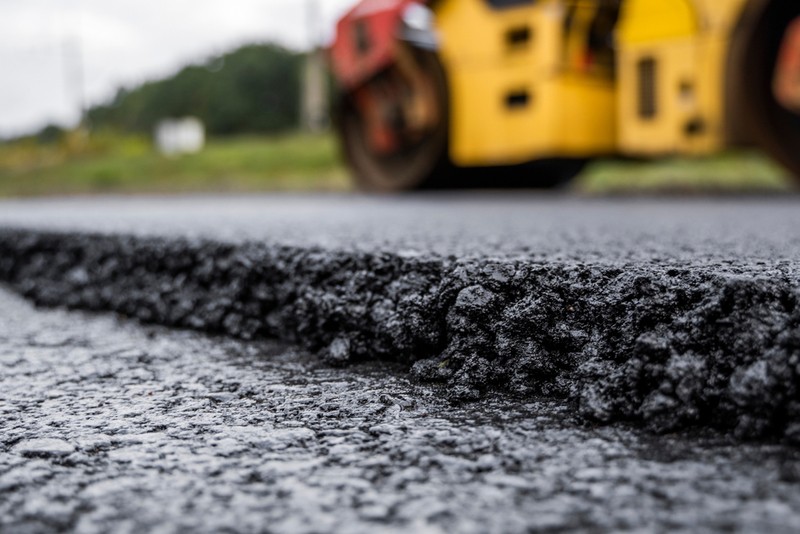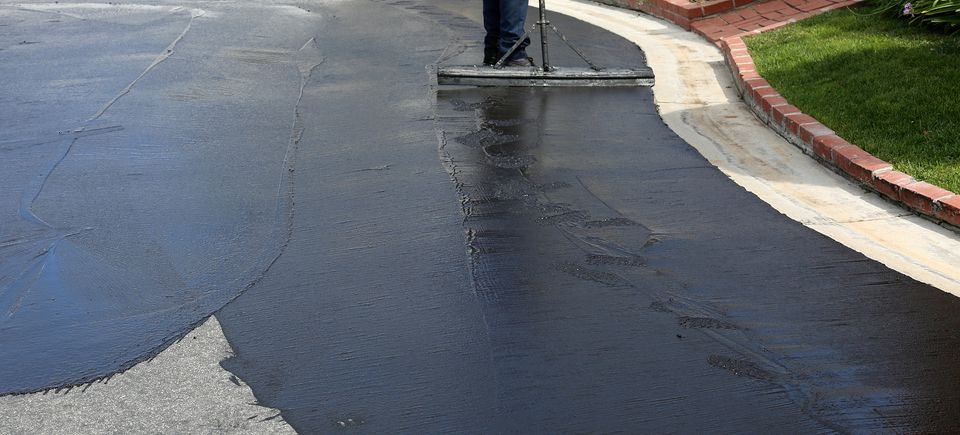Hot Mix Asphalt: A Lasting Remedy for Pavement
Hot Mix Asphalt (HMA) has arised as a leading lasting selection for sidewalk remedies, providing a myriad of environmental benefits and innovative innovations. As the demand for environmentally friendly building and construction methods grows, exploring the subtleties of HMA's sustainability can give important understandings into the future of pavement remedies.
Ecological Benefits of Hot Mix Asphalt

Furthermore, Warm Mix Asphalt assists to mitigate city heat island impacts. Its dark shade soaks up sunlight, decreasing the amount of warm mirrored back right into the environment compared to lighter-colored pavements. This can lower ambient temperature levels in metropolitan locations, decreasing the need for a/c and ultimately lowering energy intake.
On top of that, Hot Mix Asphalt contributes to improved stormwater administration. Its permeable nature enables water to infiltrate the sidewalk and recharge groundwater products, lowering overflow and the danger of flooding. These ecological advantages make Warm Mix Asphalt a lasting option for paving freeways and roads.
Energy Effectiveness in HMA Manufacturing
Is power performance a crucial variable in the production of Hot Mix Asphalt (HMA)? Absolutely. Power plays a considerable function in the manufacturing of HMA, influencing both expense and environmental sustainability. One key element of energy efficiency in HMA production is the usage of warm mix asphalt (WMA) technologies (commercial parking lot paving). WMA enables the blending and positioning of asphalt at lower temperature levels contrasted to typical warm mix asphalt, leading to reduced power usage during production. This process not only lowers gas usage but also reduces greenhouse gas emissions, making it a more eco-friendly choice.
In addition, innovations in plant modern technologies have actually caused even more energy-efficient HMA production procedures. Modern plants are designed with attributes like recycled asphalt pavement (RAP) handling capacities, efficient heater systems, and improved insulation, all adding to energy financial savings. By enhancing power usage in HMA manufacturing, the industry can lower its carbon footprint while keeping high-grade pavement products. Energy effectiveness is, therefore, a critical consideration in making certain the sustainability of Hot Mix Asphalt manufacturing.
Recyclability of Warm Mix Asphalt
The recyclability of Warm Mix Asphalt (HMA) is a pivotal aspect of its sustainability and long-lasting environmental effect. HMA is one of the most recycled products in the USA, with over 100 million lots of recovered asphalt sidewalk (RAP) being reused annually in new pavement building. Reusing HMA uses a number of ecological advantages, such as reducing the need for virgin products, decreasing power intake throughout manufacturing, and lowering the amount of waste sent to landfills.
The process of recycling HMA includes grating the existing sidewalk, squashing it into visit this site smaller items, and mixing it with new aggregate and asphalt binder to develop a recycled mix. Overall, the recyclability of HMA plays a significant role in advertising lasting methods within the pavement market.

Long-Term Performance of HMA
Asphalt pavements demonstrate resilience and strength over an extensive period, reflecting the long-term performance of Warm Mix Asphalt (HMA) The longevity of HMA can be connected to its capability to stand up to rush hour lots, harsh climate problems, and the results of aging. Studies have actually shown that well-designed and correctly built HMA pavements can last for twenty years or more with normal upkeep. The key to taking full advantage of the long-lasting performance of HMA depends on using top notch products, adhering to ideal techniques in building and construction, and applying reliable upkeep methods. Correct water drainage, routine assessments, and timely fixings are necessary for preserving the architectural honesty of HMA sidewalks in time. Furthermore, developments in HMA technology, such sites as the usage of polymer-modified binders and cozy mix asphalt, have additionally improved the resilience and longevity of HMA sidewalks. By focusing special info on high quality building and construction and upkeep techniques, HMA remains to show itself as a cost-efficient and sustainable remedy for resilient sidewalk framework.

HMA: Sturdiness and Sustainability
Demonstrating both resilience and sustainability, Warm Mix Asphalt (HMA) has come to be a keystone in the building of lasting sidewalk facilities - angled parking. HMA's durability originates from its capability to stand up to hefty lots, rough weather condition conditions, and high website traffic quantities, making it a dependable choice for streets, freeways, and airport paths. The composition of HMA, which normally includes accumulations, binder, and filler, plays a vital role in improving its durability and resistance to deterioration
In addition, HMA's sustainability exists in its recyclability and energy-efficient production procedure. The capacity to reuse recovered asphalt sidewalk (RAP) in new HMA combinations reduces the need for virgin products and decreases the environmental effect of pavement building and construction and maintenance. Furthermore, the energy effectiveness of creating HMA lies in its lower mixing temperature levels contrasted to various other sidewalk materials, resulting in reduced power usage and greenhouse gas discharges.
Verdict
Finally, warm mix asphalt (HMA) offers a sustainable remedy for pavement with its ecologically friendly features. HMA's recyclability, power effectiveness in manufacturing, and lasting resilience make it a green option for roadway building and construction. By conserving natural deposits, decreasing waste, and lowering greenhouse gas emissions, HMA plays an important function in advertising sustainability in facilities development. Its ability to mitigate metropolitan heat island impacts additionally highlights its importance in developing ecologically mindful and resilient sidewalk systems.
HMA is one of the most recycled products in the United States, with over 100 million lots of recovered asphalt sidewalk (RAP) being recycled annually in brand-new pavement construction.The process of reusing HMA involves grating the existing pavement, crushing it right into smaller pieces, and mixing it with brand-new accumulation and asphalt binder to develop a recycled mix.Asphalt sidewalks show resilience and durability over an extended duration, reflecting the long-term efficiency of Warm Mix Asphalt (HMA) Furthermore, innovations in HMA innovation, such as the use of polymer-modified binders and cozy mix asphalt, have actually additionally enhanced the sturdiness and longevity of HMA sidewalks. The ability to recycle redeemed asphalt pavement (RAP) in new HMA blends lowers the need for virgin materials and decreases the environmental effect of sidewalk building and maintenance.